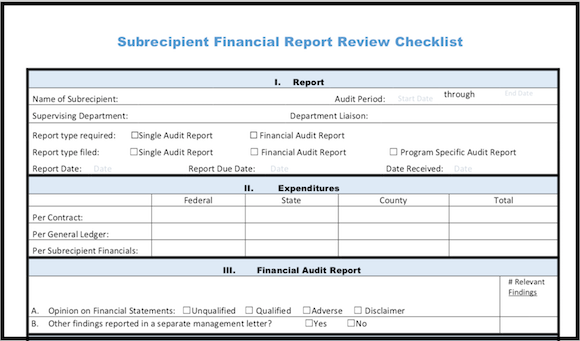|
Most governments prepare monthly or quarterly budget vs. actual financial reports so that management and elected officials can monitor progress of revenues and expenses vs. the adopted budget. Each government prepares these budget vs. actual financial reports in slightly different formats and various levels of detail depending on their needs. Attached is an example of a good budget vs. actual financial report (click the link to view and download the Excel spreadsheet: "Sample - Budget vs. Actual Financial Report"). For most readers of the report, it is very important to provide narrative to help them understand the most important points. Therefore all significant budget vs. actual variances should be explained in simple language. To prepare these variance explanations, accounting personnel will need to decide:
Below Are 6 Good Rules of Thumb for Providing Variance Explanations:
Here are a few examples of good variance explanations:
Frequently several small variances make up a large variance.
Here is an example of a good explanation in such circumstance:
If there are variances going in the opposite direction (such as Brownfield feasibility study above), include and explain. Keep adding the next largest dollar variance until you have explained about 80% of the line item variance.
The same discipline described above for explaining budget vs. actual variances can be used whenever financial variances need to be explained.
For more specific questions regarding budget variances or your financial reports, please feel free to reach out to Kevin directly – he is available for a free consultation, via phone or email:
Kevin Harper, CPA kharper@kevinharpercpa.com (510) 593-503
If you'd like to get more free tips, as well as downloadable tools and templates for your agency, please join our mailing list here!
(We’ll send you a monthly curated selection of our blog posts. You can unsubscribe at any time.) |
The Government Finance and Accounting BlogYour source for government finance insights, resources, and tools.
SEARCH BLOG:
Meet the AuthorKevin W. Harper is a certified public accountant in California. He has decades of audit and consulting experience, entirely in service to local governments. He is committed to helping government entities improve their internal operations and controls. List of free Tools & Resources
Click here to see our full list of resources (templates, checklists, Excel tools & more) – free for your agency to use. Blog Categories
All
Need a Consultation?Stay in Touch! |
Search Across Entire Site:
HELPFUL LINKS:
|
461 2nd Street, #302
San Francisco, CA 94107 (510) 593-5037 KHarper@kevinharpercpa.com |




 RSS Feed
RSS Feed